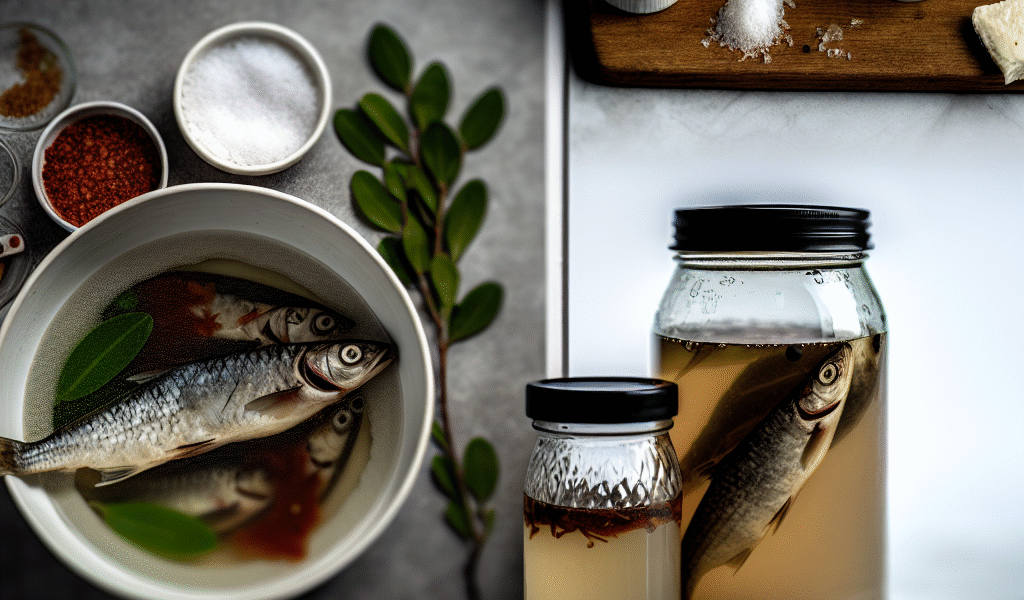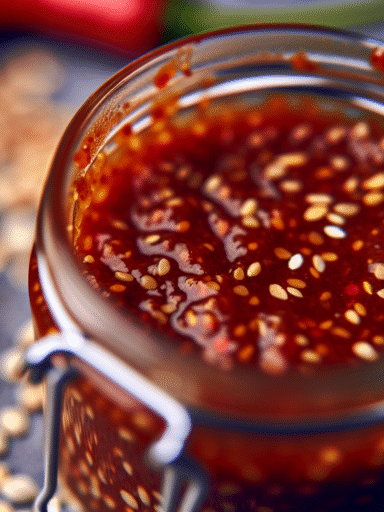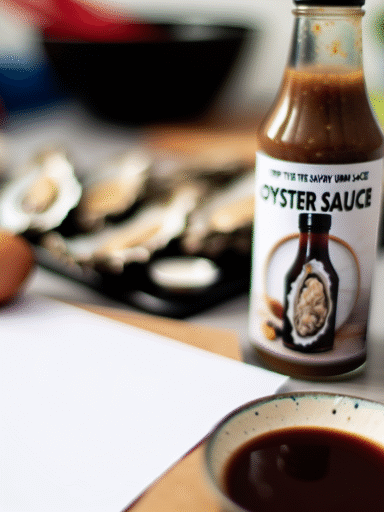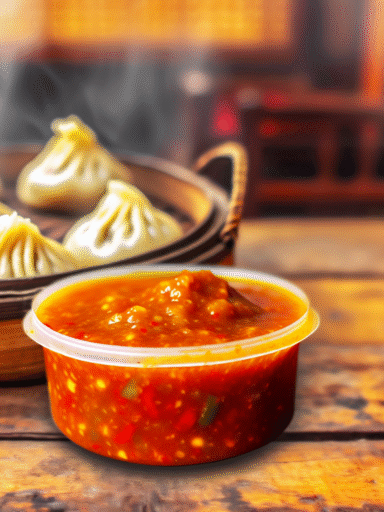Fish Sauce
Tags / Categories: savory, umami, salty, fermented, anchovies, Southeast Asian, Vietnamese, Thai, dipping sauce, marinade, seasoning
Quick Info Box
- Prep Time: 10 minutes
- Cook Time: 0 minutes (fermentation time varies)
- Total Time: 6 months to 1 year (fermentation)
- Difficulty Level: Intermediate (patience required!)
- Yield: About 2 cups
Fish sauce is that magical amber elixir that transforms dishes with a punch of rich umami and salty depth. Whether you’re drizzling it on stir-fries, mixing it into dipping sauces, or adding it to marinades, it’s a pantry superstar in Southeast Asian kitchens. Let’s dive into what makes fish sauce so special and learn how you can make a basic version at home.
Understanding Fish Sauce: Ingredients and Process
At its core, fish sauce is fermented fish and salt. Typically, small fish like anchovies or similar are layered with salt in barrels and left to slowly ferment for months, sometimes up to a year. The natural enzymes break down the fish, turning it into a fragrant, flavorful liquid that’s bursting with umami — that fifth taste that keeps you coming back for more.
For a simple homemade version, you’ll need a good ratio of salt to fish (about 3:1 by weight). Don’t stress if it looks a little chunky or cloudy at first; the flavors deepen as it ages and the solids settle out. The fermentation time is what really matters to develop those complex notes.
- Ingredients:
- 1 lb fresh anchovies (or other small whole fish)
- 3 tbsp sea salt (adjust as needed)
- Filtered water (optional, to adjust consistency)
Simple Homemade Fish Sauce Instructions
- Clean the fish: Rinse anchovies gently under cold water. Pat dry to remove excess moisture but keep their natural oils.
- Salt layering: In a clean glass or ceramic jar, layer the fish and salt, beginning with salt. Press down gently to remove air pockets.
- Seal and ferment: Cover the jar with a cheesecloth or loose lid to allow airflow but keep out dust. Store in a cool, dark place for at least 6 months. During this time, natural enzymes will break down the fish.
- Extract the liquid: After fermentation, strain the liquid through a fine mesh or cheesecloth into a clean bottle. This golden elixir is your fish sauce.
- Optional: Add a splash of filtered water if the sauce is too strong initially. Taste, then adjust salt or add a dash of lime for brightness when using.
Your kitchen will smell amazing right about now—kind of like the ocean mixed with savory goodness.
Uses, Variations, and Storage Tips
Fish sauce is incredibly versatile. Use it to add depth to soups like pho, stir-fries, dipping sauces, and even salad dressings. Just a splash goes a long way, so start small — you can always add more.
Variations: In Vietnam and Thailand, fish sauces vary slightly depending on the fish used (anchovies, mackerel, or shrimp) and fermentation time. If you want a less intense flavor, try substituting half the fish with dried shrimp or using a shorter fermentation period, then blend with soy sauce for milder umami—great for vegetarians missing that salty punch.
For a vegan-friendly option, use fermented soy or mushroom sauces instead (although this won’t be traditional fish sauce, it mimics the umami nicely).
Storage & Make-Ahead: Properly bottled fish sauce can last for years unrefrigerated thanks to its high salt content. Once opened, store it in a cool, dark place or refrigerator to preserve flavor and freshness. No need to freeze—this sauce only gets better with age.
Serving Suggestions
- Drizzle over grilled meats or seafood for an extra punch.
- Mix into dipping sauces with lime juice, garlic, and chili for spring rolls or dumplings.
- Add a teaspoon to your next batch of Pad Thai or stir-fry noodles.
- Use in place of salt in marinades or salad dressings for a salty, savory kick.
Origin & History
Fish sauce dates back thousands of years, with roots in ancient Southeast Asia and parts of the Mediterranean (think Roman garum). It’s a culinary cornerstone of Vietnamese, Thai, Filipino, and Cambodian kitchens. The staple was originally a way to preserve fish before refrigeration, but it quickly became a flavor powerhouse, beloved for turning simple ingredients into spectacular dishes.
Nutritional Information (per tablespoon)
- Calories: 10
- Protein: 1.5 g
- Fat: 0 g
- Carbohydrates: 1 g
- Sodium: 1100 mg (high, so use sparingly)
Related Sauces / Try Next
- Soy Sauce – Another umami-rich classic, great for vegetarian dishes.
- Oyster Sauce – Adds sweet and briny flavors to Asian dishes.
- Shrimp Paste – Fermented and packed with intense seafood flavor.
FAQ
Q: Can I use fish sauce if I am allergic to shellfish?
A: Fish sauce is made from fish, not shellfish, but some commercial sauces may include shrimp paste. Always check the label carefully if allergies are a concern.
Q: Can fish sauce go bad?
A: Thanks to its salt content, fish sauce rarely spoils. Over time, the flavor may mellow, but it remains safe to use for years if stored properly.
Q: How do I reduce the strong smell of fish sauce in recipes?
A: Balancing fish sauce with fresh herbs, lime juice, or a bit of sugar can soften the aroma and highlight its umami without overpowering your dish.
Fish sauce is truly one of those pantry magic-makers — once you embrace its bold flavor, it becomes impossible to imagine cooking without it. Whether homemade or store-bought, it brings a savory complexity that elevates any meal. Happy fermenting and savoring!



